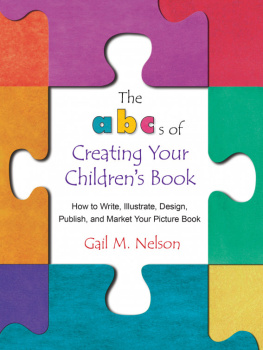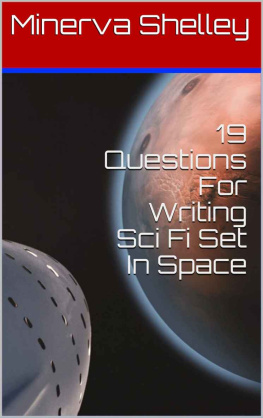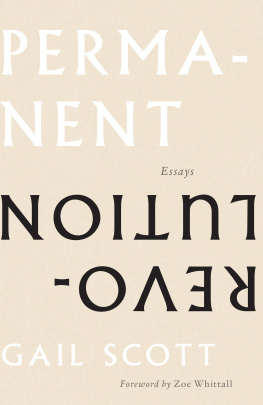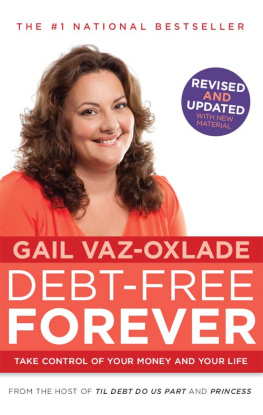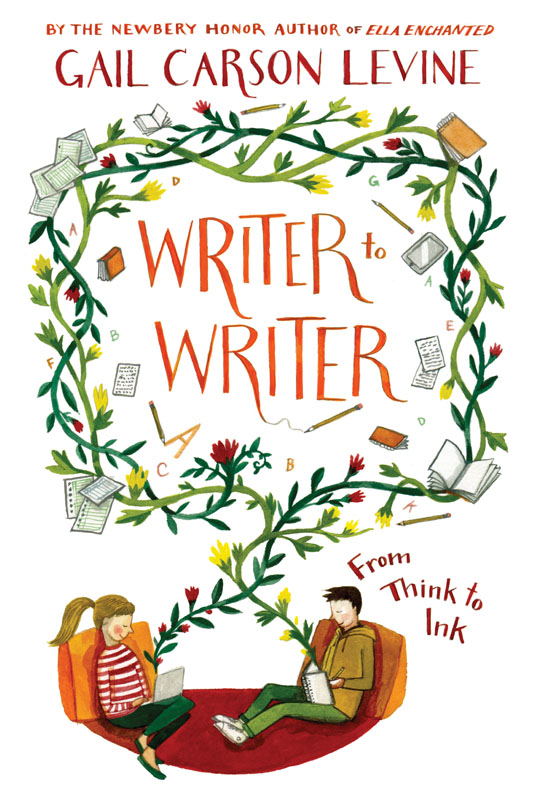To you, the writers who read my blog,
who share your questions and ideas, who explore
with me and with each other the intricacies of
writing stories and poems. How grateful
I am to have your company!
Thanks to all on the blog who charged in
with suggestions for the subtitle of this book.
Extra-special thanks to Erica Eliza Smith for
coming up with the actual, perfect subtitle!
CONTENTS
Guide
I n 2009 I started a new adventure, creating a blogshort essays, reallywhich Id never done before. That I could do it is proof that if you write one kind of thing, you have a leg up on writing another. When I began, I didnt know what Id talk about. This is from the first paragraph of my first post:
Fear of the blank blog is as bad as fear of the blank page. For my blogging life, I intend to post once a week, and I will probably blog about writing, but I dont know that for sure. Ill see how it shapes up. If you are reading this, I would welcome a post to tell me what youre interested in reading from me.
And people did. Youll meet some of them here; their names are more various than in any baby-naming book. The blog became a writers advice column, as you can see for yourself if you care to go online:
www.gailcarsonlevine.blogspot.com.
From early days to today, readers posted questions and I posted responses that reflect my approach to writing. A discussion of the topic followed my answer as readers added comments and more questions. Soon I noticed that I was getting even deeper into the how-to of writing than I had in my first book on writing, Writing Magic, and I thought, Theres a book here.
Except for the chapters on poetry, which I added because I love to read and write poems and to teach poetry writing to kids, this book is the blogs greatest hits, according to me, rearranged and sometimes expanded. Ive loved hearing from other writerssome experienced, some beginners. If youre reading this book and youve chimed in on the blog, thank you! Ive especially enjoyed the mutual support in your replies to each other.
Soon after this book is published, the blog will celebrate its sixth birthday. When I assembled all my posts, the result was over 450 single-spaced pages, more than twice as long as any of my novels. Theres a lot to say about writing stories.
A lot, because people tell stories constantly. We are forever shaping what happens to us into anecdotes and sometimes into grand sagas. If we can tell a good spoken story, we cast a spell over our listeners, who forget where they are and the people theyre with. Instead, they picture the characters, real or imaginary, who populate our story. Our audience may be in our bedroom or on a busy street, but the scenery recedes and is replaced by the setting of our tale, which may just be somebody elses bedroom or a different busy street, or it may be an island in the middle of a stormy sea or a castle clinging to the side of a mountain.
When we write the story down, we weave the magic tighter. The more powerful our writing, the more fully well bring a reader into our wizardry. Thats what this book is forto make the enchantment binding.
With a little help from Shakespeares witches in Macbeth, I wrote a writers spell poem:
Mutter, mutter, dream and ponder;
Writer writes and fingers flutter.
Starting words of a startling tale,
On the paper, laugh or wail,
Days of joy and weeks of woe,
Mountains high and vales below,
Heros hope, villains might,
Evils plot, virtue bright.
With this spell of flash and thunder,
In a vision, write the wonder.
As Ive been writing this book, Ive made a habit of starting work by rereading this spell, and sometimes I say it out loud. You can too! Try reading or reciting it when you begin. A quick ritual can slide you into your concentration zone.
In a moment were going to begin to write, but first, a few words about the writing prompts in these pages. Theyre just jumping-off points; dont feel you have to be faithful to them. You can change as much as you like: the names of the characters, the setting, the actionanything.
Whatever you write from my prompts belongs entirely to you. If an editor should want to publish a story you wrote based on one, you dont need my permission to go ahead. Naturally Id like to hear about your triumph on my blog or my website, and I will be mighty proud of you.
Now, lets do it. Writing time! Try these:
Pick an object in your housecould be the stove, your violin, your grandmothers running shoes, a parents computer. Anything! Separate it in your mind from its real history and invent a history for it. Think of the drama, the tragedy, the comedy that went into its creation, its passage from owner to owner, its effect on their lives and maybe even their deaths. Write the history as a story.
Pick a different object, which can be from your house again or your yard or the supermarketanywhere!and move it in your mind to a far-off location: a desert, the bottom of the ocean, the surface of an as-yet-undiscovered planet, the cellar of a castle in a fantasy kingdom. Write a story about how it got there and how it was discovered or rediscovered.
Give either object a magical property and write a story about how it became magical, who knows about the magic, what purposes its magic can serve. Invent characters who need the object for their virtuous or nefarious purposes.
Have fun, and save what you write, whatever you write!
Almost every chapter in this book ends with these two commands: Have fun, and save what you write! I have reasons for issuing them.
Lets start with the first command. Writing isnt always pleasurable, even for people who love to write. Sometimes ideas flee to another galaxy and wont come back. Sometimes the perfect words evaporate. Have fun is a reminder of why we write: to explore ideas, to follow a story, to find out what our characters will do, to entertain ourselves and our readers. The fate of planet Earth doesnt hang in the balance. We can loosen up, relax, even have fun.
Save what you write is important! When you save your work, you show yourself that you respect and value your efforts, even if you hate what you just wrote, even if it embarrasses you.
Keeping your writing means youre building a body of work. Story fragments are a resource you can mine. Finished stories are trophies. You can look back at themand at your unfinished attemptsto chart your progress. Dont rip up your pages or turn them into a bonfire or hit delete! The consequence, sooner or later, will be regret. Pity your future biographers, who will pore over your every phrase and write dissertations on the scene you saved even though you cut it from your third novel.
Remember this about saving if you write on a computer: your writing should also be backed up somewhere, in case the computer crashes. You cant save it if you lose it.
Those are the commands. These are the rules. They appeared in Writing Magic, and they still apply. Here they are again:
1. The best way to write better is to write more.
2. The best way to write better is to write more.
3. The best way to write better is to write more.
4. The best way to write more is to write whenever you have five minutes and wherever you find a chair and a pen and paper or your computer.
5. Read!
6. Reread! Theres nothing wrong with reading a book you love over and over. When you do, the words get inside you, become part of you, in a way that words in a book youve read only once cant.




